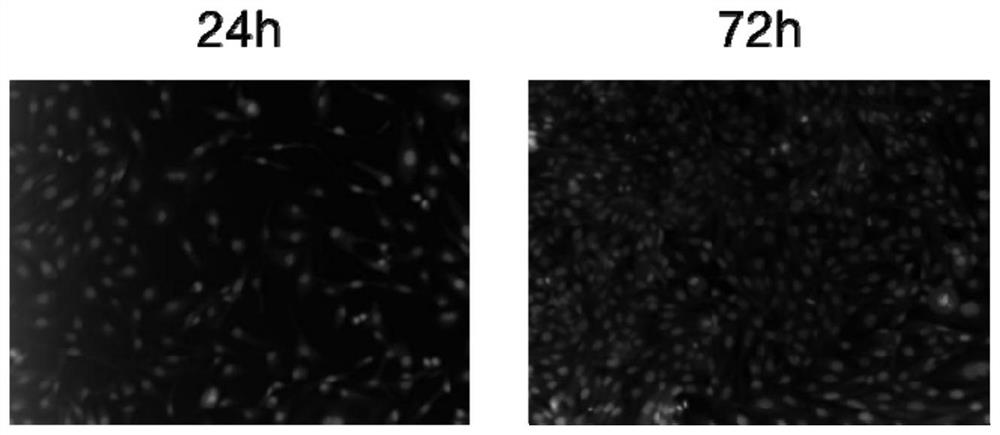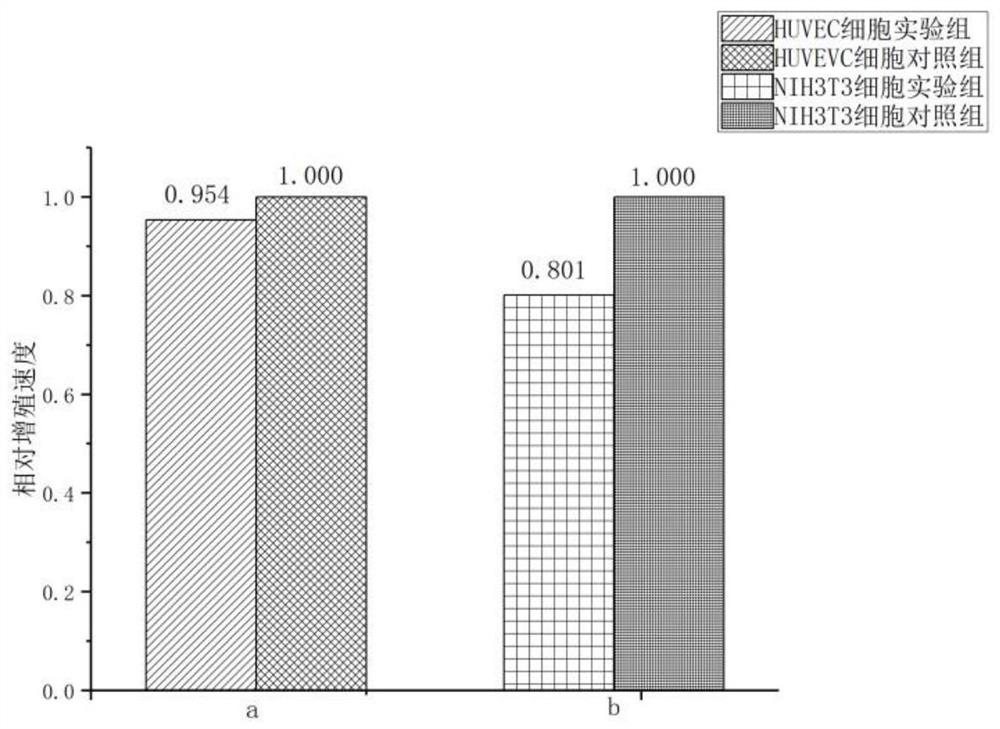3D printing collagen biological sponge scaffold and preparation method thereof
A technology of collagen and original protein, which is applied in the direction of non-active components of polymer compounds, prostheses, additive processing, etc., can solve the problems of low viscosity of pure collagen, difficult to print and shape, etc., to facilitate cell growth and maintain survival rate , the effect of high cell viability
- Summary
- Abstract
- Description
- Claims
- Application Information
AI Technical Summary
Problems solved by technology
Method used
Image
Examples
Embodiment 1
[0039] Dissolve recombinant human collagen in 0.12M acetic acid aqueous solution to prepare 3% (wt%) recombinant human collagen solution; dissolve chitosan in 0.12M acetic acid aqueous solution to prepare 3% (wt%) shell Polysaccharide solution; in addition, proanthocyanidins were dissolved in phosphate buffer (pH=6) containing 10% (v / v) absolute ethanol to prepare a 0.3% (wt%) proanthocyanidin solution.
[0040] Under the condition of ice bath, the chitosan solution was dropped into the recombinant human collagen solution, and stirred during the period until the mass ratio of recombinant human collagen to chitosan was 1:1, and the total content was 1.5% (wt%) ), continue to stir for 20 minutes, vacuum degassing with a vacuum degassing machine, then inject the mixed solution into the printing bin, print and freeze forming layer by layer according to the CAD model at a temperature of -30 ° C, and then place it in a vacuum freeze dryer (Japan The FDU-1200 model of Tokyo Physical ...
Embodiment 2
[0042]Dissolve recombinant human collagen in 0.12M acetic acid aqueous solution to prepare 3% (wt%) recombinant human collagen solution; dissolve chitosan in 0.12M acetic acid aqueous solution to prepare 3% (wt%) shell Polysaccharide solution; in addition, proanthocyanidins were dissolved in phosphate buffer (pH=6) containing 10% (v / v) absolute ethanol to prepare a 0.3% (wt%) proanthocyanidin solution.
[0043] Under the condition of ice bath, the chitosan solution was dropped into the recombinant human collagen solution, and stirred during the period until the mass ratio of recombinant human collagen to chitosan was 4:1, and the total content was 1.5% (wt%) ), continue stirring for 20 minutes, vacuum degassing with a vacuum degassing machine, then inject the mixed solution into the printing bin, print and freeze forming layer by layer according to the CAD model at a temperature of -30 ° C, and then place it in a vacuum freeze dryer ( The FDU-1200 model of Tokyo Physical and C...
Embodiment 3
[0045] Dissolve recombinant human collagen in 0.12M acetic acid aqueous solution to prepare 3% (wt%) recombinant human collagen solution; dissolve chitosan in 0.12M acetic acid aqueous solution to prepare 3% (wt%) shell Glycan solution; in addition, proanthocyanidins were dissolved in phosphate buffer (pH6) containing 10% (v / v) absolute ethanol to prepare a 0.3% (wt%) proanthocyanidin solution.
[0046] Under the condition of ice bath, the chitosan solution was dropped into the recombinant human collagen solution, and stirred during the period, until the mass ratio of recombinant human collagen and chitosan was 1:4, and the total content was 1.5% (wt%) ), continue stirring for 20 minutes, vacuum degassing with a vacuum degassing machine, then inject the mixed solution into the printing bin, print and freeze forming layer by layer according to the CAD model at a temperature of -30 ° C, and then place it in a vacuum freeze dryer ( The FDU-1200 model of Tokyo Physical and Chemica...
PUM
 Login to View More
Login to View More Abstract
Description
Claims
Application Information
 Login to View More
Login to View More - R&D
- Intellectual Property
- Life Sciences
- Materials
- Tech Scout
- Unparalleled Data Quality
- Higher Quality Content
- 60% Fewer Hallucinations
Browse by: Latest US Patents, China's latest patents, Technical Efficacy Thesaurus, Application Domain, Technology Topic, Popular Technical Reports.
© 2025 PatSnap. All rights reserved.Legal|Privacy policy|Modern Slavery Act Transparency Statement|Sitemap|About US| Contact US: help@patsnap.com


